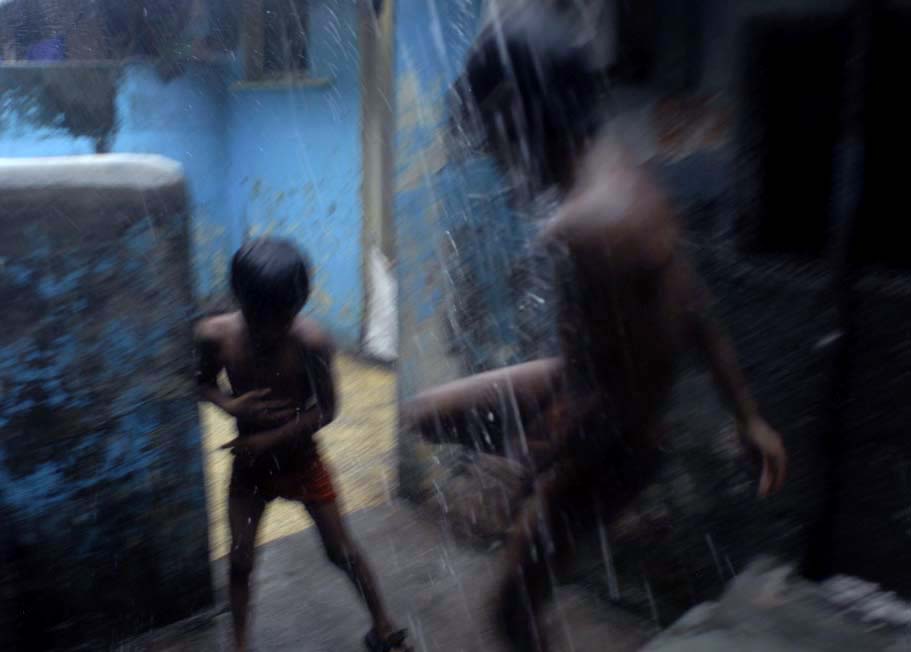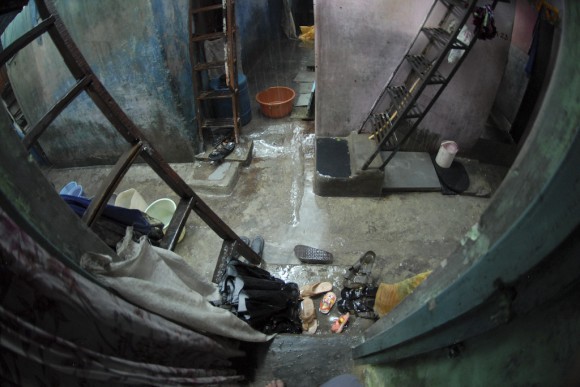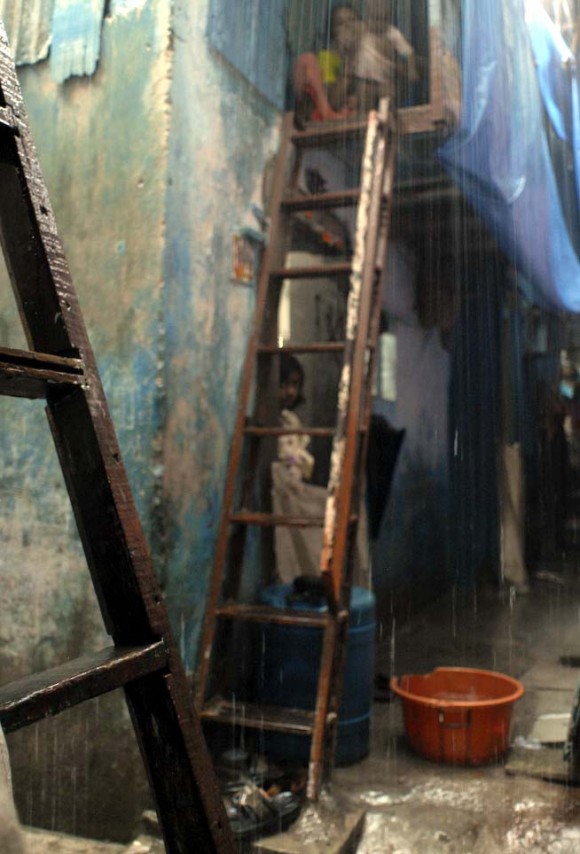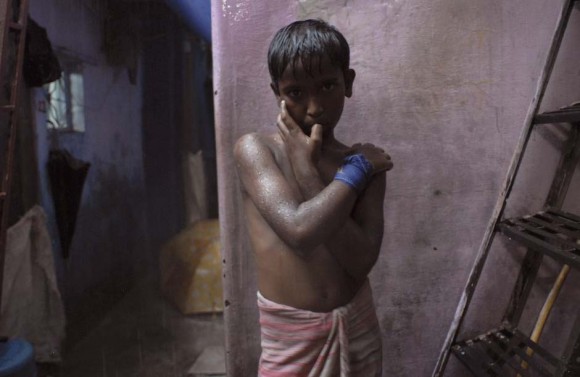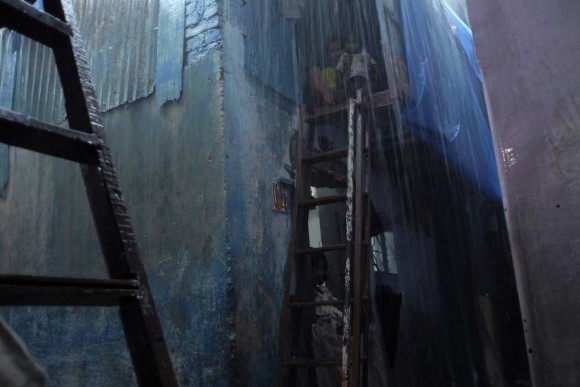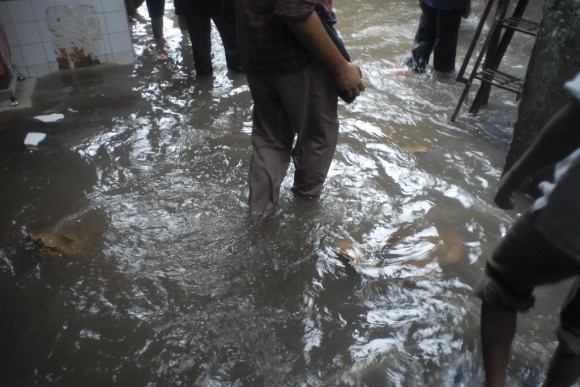Today’s office is in a neighbourhood of Mumbai’s Dhavari, on a day the monsoon really starts to kick in.
The father of the family picks us up at a landmark restaurant, hand-shakes for greetings, and motions us to tail him. For a good ten minutes we walk, skip and wade our way through the back alleys that house the bulk of Dharavi’s residents – weaving between dense two story housing, ladder-steep staircases, buckets put out to catch clean water pelting down from the sky and the occasional resident lathered with a sachet’s worth of shampoo positioning themselves under the urban waterfalls.
He eventually leads us through a ground floor doorway into his home, a room of no more than 6 square meters, where we are greeted by the lady of the house. She gently restrains the energy of one of his two daughters, whilst their second – little more than a baby sleeps contentedly on a blanket laid out on the floor behind the door.
The seating arrangements are surprisingly simple for such a tight space – everyone sits with their backs to the wall, everyone except our erstwhile guide who squats between the kitchen and bathroom – in effect the only space big enough to house his light frame. The only remaining white space – a patch of floor in the center of the room is bordered by wayward feet, and its there that the microphone sits, its red light occasionally flickering as the audio is written to memory. “Since we don’t have a perfect memory, and because everything you say is important to us, with your permission we would like to record this session…” so there it sits, the mouse in the room.
How to ensure participants feel comfortable with our presence? With the presence of our technology: small but never-the-less protruding microphones; flashing lights; consent forms; interchangeable lenses; pens; paper?
The ebb and flow of the interview is conducted in Hindi leaving me with plenty of time to think about the everyday rituals conducted in this 1 room family home. What do we expect to learn from being here? Are we there yet? And what is still missing to help us on our way?
The view from the frame of the doorway: the colourful hood of a plastic cape pulled tight over the face of a young lady crouching in the alley as she scrubs the household pots; man bent-double hobbles past, supported by a soaked child protecting him with an umbrella; kids walk into view, stand and stare, seemingly unaware of their temporal beauty and their place in these surroundings. Monsoon rain is a playground sent from the sky. If you’re a kid, its proof there’s a god.
A neighbour motions me to brave the rain and cross the alley, introduces herself with in a gentle Mumlish lilt of and encourages me to take a portrait her son. He stands, only just sheltered from the downpour and faces the camera. Formalities aside, his mother offers a chai and minutes later, when I’m back with the team in the interviewee’s home, the chai arrives in a small aluminum tea pot.
Our plan is to return for a follow up interview. Mental note to self print a photo of her son. Whether, and how to go beyond making people feel comfortable with our presence? Whether and how to evolve the relationship between one of interviewer interviewee.
Every field study comes with its own set of unique challenges and exploring and pushing what we already know helps us move from here to somewhere out there. How to meaningfully engage with close knit and sometimes defensive communities in the relatively short time that we have, and do it in such a way that benefits the individuals involved, the community and our employer? How to ensure the health and safety of an expanded team of 18, working during the monsoon in one of the world’s poorest urban centers?
Just when you think the rains can’t get any harder, its turns it up a notch. The rains remind me of a wiry kick boxer I used to see training in my Daikanyama dojo, able to churn out a consistent flurry of blows from a physique that simply couldn’t contain that much energy. And just when you thought he couldn’t turn out anything more, he would start with big body shots.
By the time we leave, the open sewers that run along many of the alley ways have flooded, their contents spilled into the stream that now makes up our path. The risk of infection wading through knee deep water is very real but it’s currently the least of our worries – the uneven river bed, including the open sewer provides numerous opportunities to gouge and sprain legs and feet.
Home is the safety of a lodge. A hot cup of tea and the liberal use of Dettol awaits.
